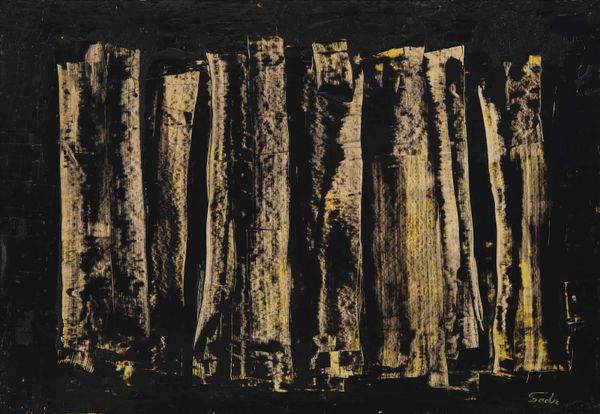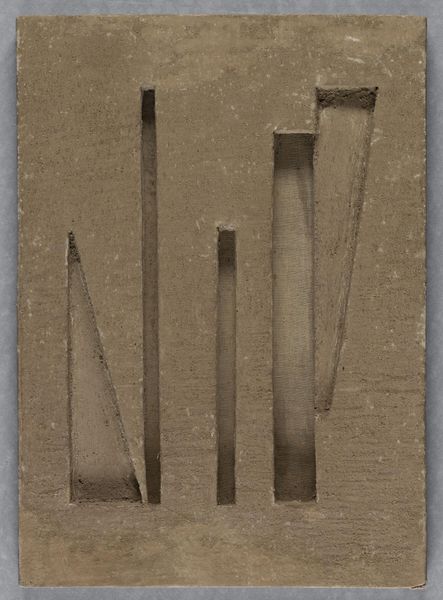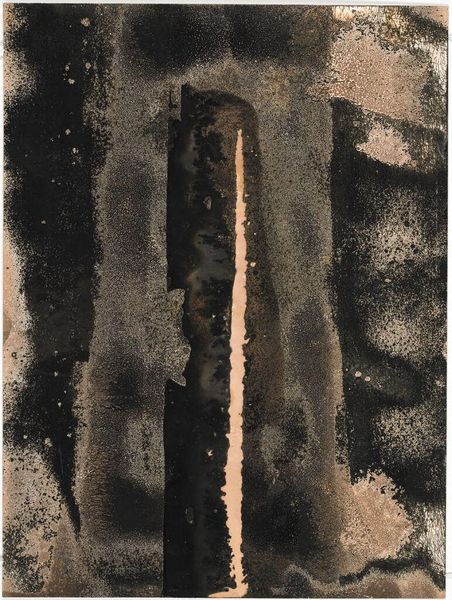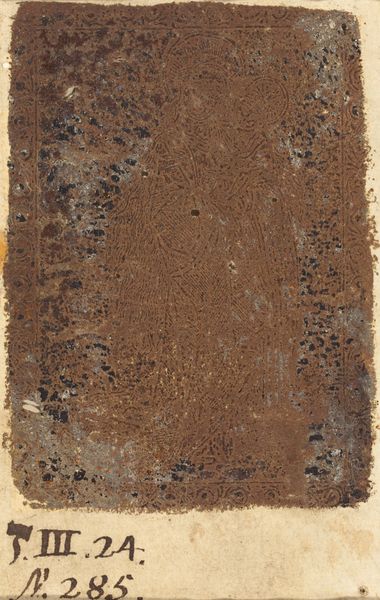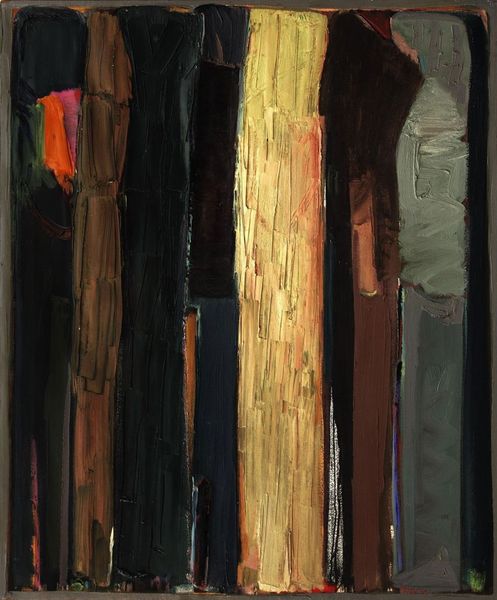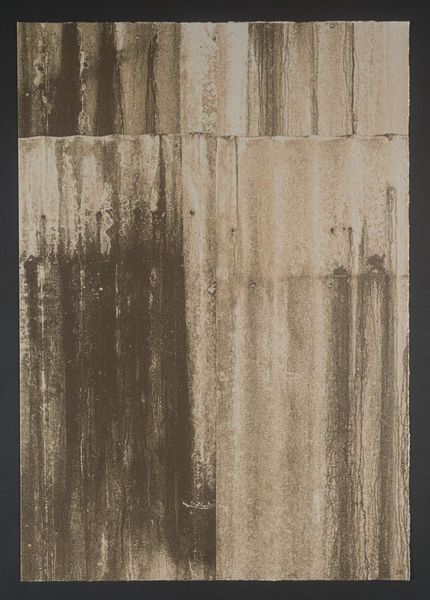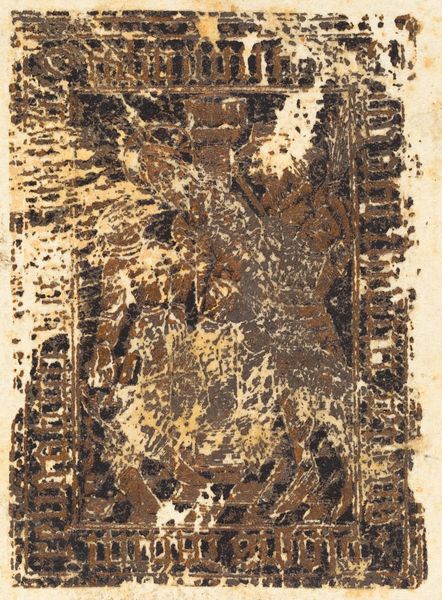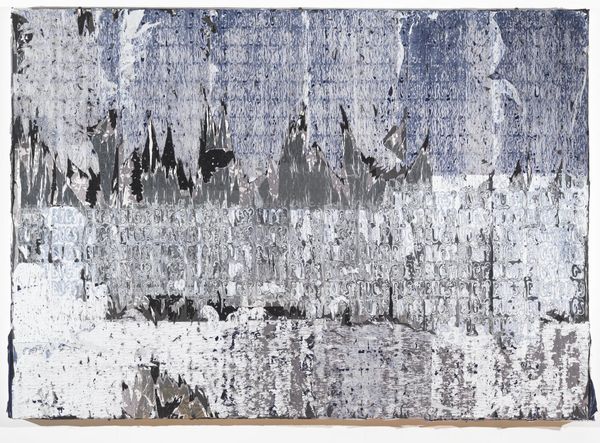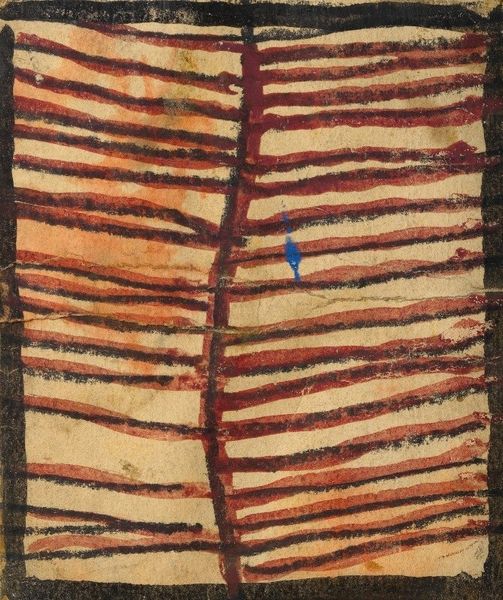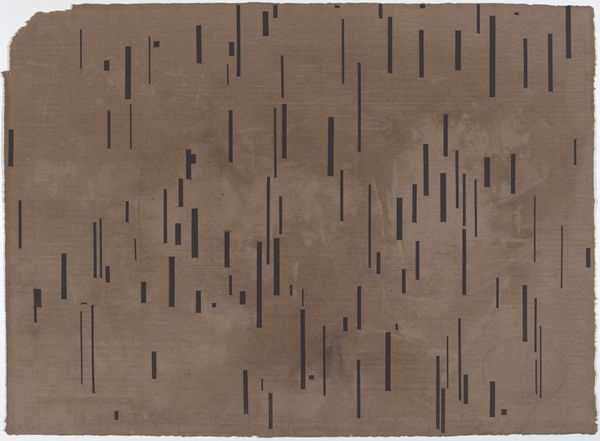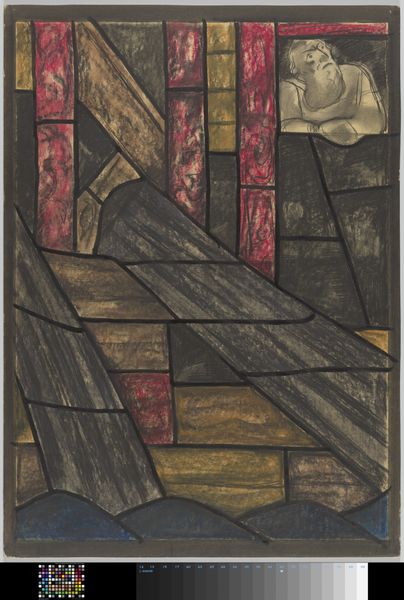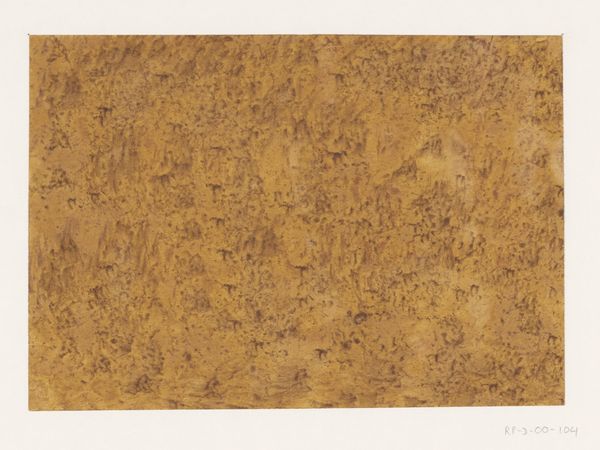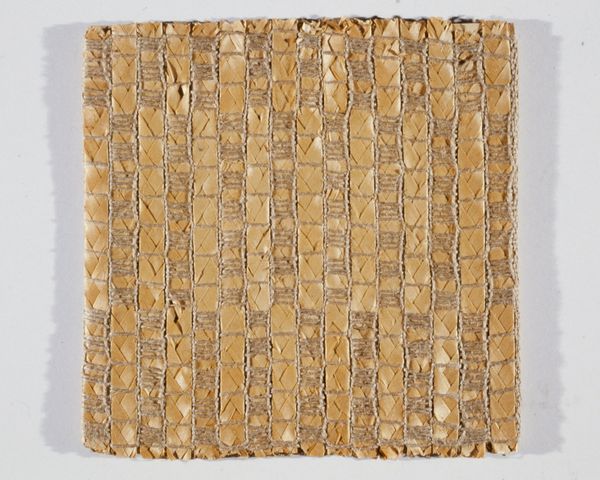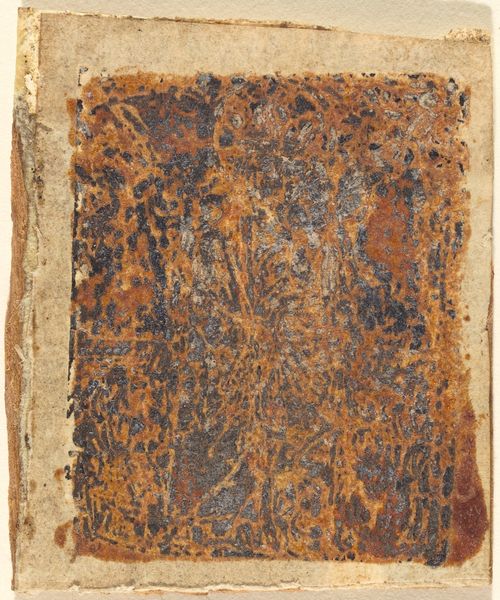
Dimensions: unconfirmed: 680 x 560 x 63 mm frame: 856 x 742 x 117mm
Copyright: © ADAGP, Paris and DACS, London 2014 | CC-BY-NC-ND 4.0 DEED, Photo: Tate
Curator: Max Ernst’s “Dadaville” confronts us with an ambiguous cityscape, built from roughly textured, vertical elements. Editor: It's immediately striking how tactile this piece is—almost oppressive in its density. The muted palette evokes a sense of decay and unease. Curator: Ernst’s construction employs diverse materials, creating contrasting textures and a visual rhythm that both attracts and repels the gaze. It is a complex interplay of form and non-form. Editor: The vertical structures suggest buildings, but the title "Dadaville" points to Dadaism's rejection of established order. This feels like a symbolic ruin, perhaps of reason itself. Curator: Indeed, the symbolic deconstruction of architectural form is key to Ernst’s aesthetic and its relationship with the subconscious. Editor: So, "Dadaville" becomes a potent symbol of societal breakdown, rendered in a strikingly physical manner. Curator: Precisely. It forces us to re-evaluate our perceptions of order, decay, and ultimately, the nature of representation itself. Editor: A rather disquieting commentary, then, delivered through texture and form.
Comments
tatebritain about 1 month ago
⋮
http://www.tate.org.uk/art/artworks/ernst-dadaville-t03707
Join the conversation
Join millions of artists and users on Artera today and experience the ultimate creative platform.
tatebritain about 1 month ago
⋮
Ernst was a key figure in the anarchic circles of Cologne Dada before moving to Paris and the emerging Surrealist movement. This strange work dates from that moment of transition. The use of rough cork is typical of Ernst’s inventive exploration of materials. By making the walls of the Dada city from this unexpected substance, he may offer a wry reflection on Dada’s temporary, but resilient, nature. Gallery label, July 2008
